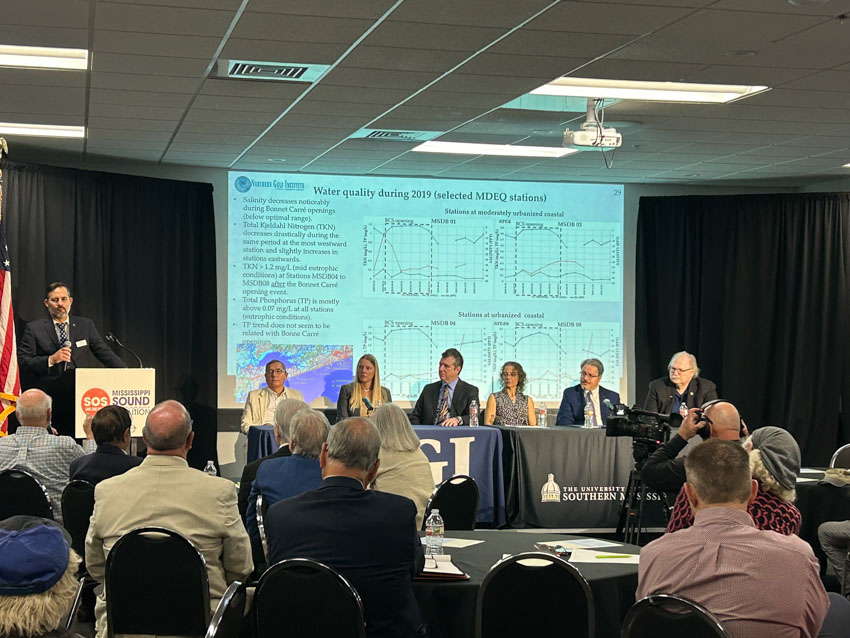USM Scientists Lead Scientific Research Forum
Tue, 03/19/2024 - 09:23am | By: Gabriela Shinskie

The University of Southern Mississippi (USM) researchers from the School of Ocean Science and Engineering (SOSE) recently paneled the Mississippi Sound Coalition meeting, a public scientific research forum focused on the Mississippi Sound and modeling efforts on ecological impacts of the Bonne Carré Spillway.
USM scientists on the panel included Drs. Kim de Mutsert, Kemal Cambazoglu, Jerry Wiggert and Scott Milroy, along with research scientist Brandy Armstrong. Drs. Wiggert and Cambazoglu, along with Armstrong, centered their presentation on water quality modeling from the opening of the Bonne Carré Spillway in Lake Pontchartrain, through Lake Borgne and into the Mississippi Sound. Drs. De Mutsert and Milroy presented their research on ecosystem modeling, specific to oyster populations.
Dr. Wiggert provided an interactive map of the different openings of the spillway in 2019 and the water flow into the sound. The Mississippi Sound runs east to west along the Mississippi and Alabama barrier islands, Cat, Ship, Horn, Petit Bois, and Dauphin Islands. The sound extends from Lake Borgne, La. To Mobile Bay, Ala.
“When the Bonne Carré opens, there are immediate impacts over the whole system even though the waters released through the spillway take 2-3 weeks to reach the western Sound,” he said.
Dr. Cambazoglu noted that the simulation allows researchers to do controlled experiments in the estuarine system. “This gives us results for currents, water levels, temperature, salinity, and water quality. Our model can help determine a tipping point for drastic conditions for oysters,” he explained.
Temperature and salinity are prime factors in survival for the sustainability of marine ecosystems in the northern Gulf Coast. The group provided charts of different inputs of freshwater deposits along with a discussion about what amount of freshwater input would be too much.
“Through these models, we can look at different age classes of oysters and their different natural sensitivities to water quality,” said Milroy. “We can then represent the ideal zones of where oysters can flourish in [observed] conditions.”
After the presentations, the panelists took questions pertaining to their research from the audience.
“I use the output from the other models, and actually model the populations of the oysters,” said Dr. De Mutsert. “With this tool we can evaluate effects of changes in the environment like the salinity on fish, shellfish and fisheries.”
Read more about the team’s research to help project the evolution of the coast. Learn more about the School of Ocean Science and Engineering.